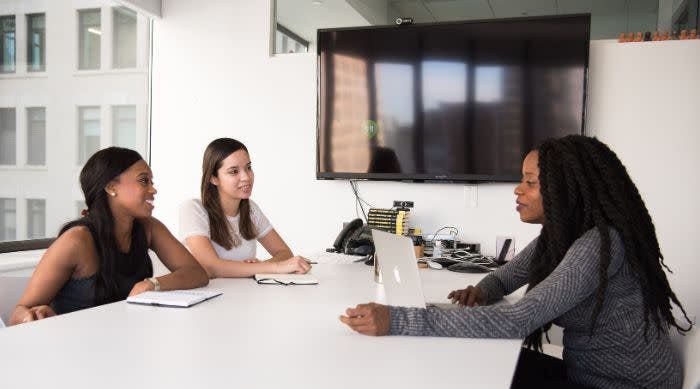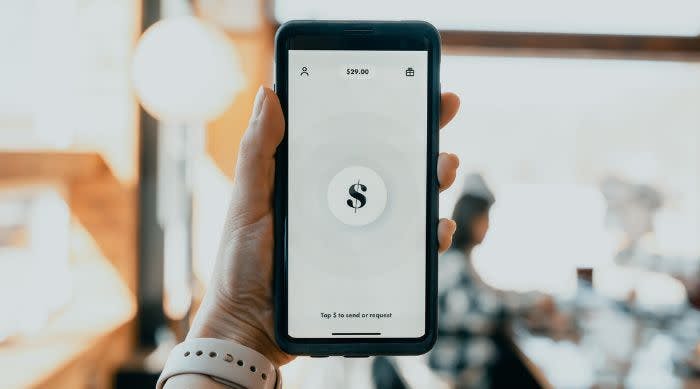The finance industry has had a reputation for being complicated and inaccessible to the everyday consumer.
Fintech is on a mission to change that.
Banking, currencies, and trading have all become digitized, and the industry is being forced to adapt.
What is fintech UX design? Fintech UX design is the process of creating user-friendly systems that will meet the needs of users of all backgrounds, while still abiding by all the complicated intricacies woven into the regulations and laws of the finance world.
We’ll address the nuanced challenges a financial technologyUX designer faces and solutions for your next financial product.
Challenge 1: Finance is dull.
‘Accountant’ isn’t usually the career path a young child dreams of when they grow up. Finance is full of numbers and jargon, and can be fairly boring to most people. Everyone eventually grows up, and they will at the very least tend to their personal finances.
UX designers have the opportunity to make finance more interesting by creating an engaging and informative user experience.
Solution: Make Numbers Fun!
Gamify your fintech product! Here are a few ideas:
Let users gain digital rewards like badges and stickers to add to their accounts.
Have them set financial goals and complete challenges, sending reminders to invite users back to come back to their banking app to complete their tasks.
Add gamification to a learning center to teach how the mobile app works or explain financial concepts.
Incorporate colors, motion graphics, and sounds in your app design to help users differentiate completed transactions, goals, and sections of the product.
Challenge 2: Security and regulatory compliance keep getting more complicated.
In order to provide financial services like mobile banking or cryptowallets, a product must adhere to the numerous regulations, laws, and compliance requirements of traditional banking.
The regulatory landscape is extremely fragmented, constantly being updated, and the institutions responsible for overseeing financial technology vary based on location.
Solution: Include a legal expert in the workflow.
Fintech companies should employ legal experts to advise on the regulatory and data security requirements in each region the financial product will be operating. The legal council should review every part of the roadmap.
Maintaining and securing transactional data and sensitive user data must be encrypted at both the system level and the application level.
Each region will have its own unique regulatory measures. In Europe, for instance, the major digital banking regulatory compliance measures legal should be advising the design team on include:
The New Payment Services Directive
The European Union Directives and Action Task Force
The General Data Protection Regulation (GDRP)
Along with data security and payment regulations, the design process must also include measures for AML (Anti-Money Laundering) and KYC (Know Your Customer) compliance both during onboarding and throughout the lifetime of the user.
Ask your legal experts about using regulatory technology (regtech) as a solution for reporting on and detecting suspicious activity.
Challenge 3: It’s hard to simplify complex financial concepts to simple UX/UI.
Most users of a fintech app won’t have the financial know how of a banker or cryptocurrency investor. The user experience design must account for the broad audience it serves. Simplifying financial concepts will improve customer experience.
Solution: Make finance relatable.
Understanding personal finance, blockchain, and industry jargon can be a challenge for a regular user. Be sure to include explanations in ordinary language for tough topics and key functions.
Consider using infographics to display numbers and account balances in a more visually attractive, easy-to-digest manner.
Challenge 4: Onboarding and ongoing transactions require a perfect level of friction.
App development often hinges on the concept of reducing friction, or the number of steps/complexity a user has to implement to complete a task.
When designing for financial services, an app needs to keep enough friction to prevent costly user errors while reducing unnecessary friction that may frustrate a customer.
What are the pros and cons of fintech UX design?
The biggest pro of fintech UX design is that the ease of access to a digital wallet or neobank account gives the user everything they need to make all decisions and transactions by themselves.
A con of fintech UX design is that without the bankers and financial advisors of a brick-and-mortar financial institution, a user can literally make a costly mistake.
Solution: Perform user research to protect your user from themself.
Having a user interface that is too easy could end up allowing users to make transactions with too much haste. Having the perfect amount of friction to protect your user’s finances, while still maintaining useability is key.
No one wants to spend all month budgeting just to wipe their account by accidentally authorizing a transaction.
On the flip side, you still want the digital experience to be simpler and less frustrating than dealing with a traditional institution.
In-depth user research and usability testing will help understand the habits and needs of the people using your fintech product. You can tweak your UX/UI with two-factor authentication on transactions or multilevel confirmations to slow a user down.
Challenge 5: Interbank transfers and trade orders are intricate.
The process to transfer money involves interbank transfer systems to take funds from a payor to a payee. For a user, it might seem like a click of a button, but for the designer, it requires routing funds through intermediary banks.
Fintech that involves trading needs to account for real-time fluctuating prices. If the tech is also sending money between countries, there is the bonus challenge of currency exchange and implementing global financial infrastructure like the SWIFT (Society for Worldwide Interbank Financial Telecommunications) system.
Solution: Create limits, transparency, and tests.
A common practice in banking to confirm configurations between accounts is to do penny testing. When a user joins or adds a new account, a small value transaction is sent and then confirmed by the user. This type of test will ensure that funds are being transferred to the right location.
It is also wise to set transfer limits. These limits protect all parties from malicious intent and fraudulent activity.
Due to the regulations and restrictions between governments and banking institutions, it is unlikely a global fintech app would be realistic for today’s fintech startups. Have full transparency on which countries users can send and receive money with your tech.
Have the same transparency up front on how currency exchanges are handled and the price fluctuation that may occur from the moment a user clicks to buy/sell, and the split second the trade is actually made.
Challenge 6: You must earn an enormous amount of trust from users.
The data that fintech platforms require is highly sensitive information. They are also one of the most obvious targets for a cyber attack. One misstep in security can ruin a brand’s reputation in the long run. It is important for a user to feel secure using fintech software.
Solution: Inspire Confidence
UX/UI designers can add extra verification methods during onboarding to make sure they know their customers. Once they have their customer’s data secured and in compliance, consider giving the user control of extra privacy and security measures on their account.
Some innovative ideas to build trust with your users:
Restrictions on the length of time an account stays logged in
Alerts for pending and completed transactions
A direct channel to contact support in the event of an emergency
Allowing users to freeze an account with a simple toggle switch in the event of lost or stolen information
The opportunity to set a budget and get a notification if they are getting near their monthly numbers
There should be regular risk assessments to prevent financial crimes and data breaches. Adjust security measures according to the assessments, and let your customers know you’re continuously monitoring your platform for their safety.
Challenge 7: Market disruption is risky.
We’ve already seen a massive shift in the financial ecosystem from traditional providers to fintech products. Fintech is booming as our societies are becoming more and more digital.
This puts fintech in a very delicate position. In order to be successful in disrupting such a long-standing industry, fintech will be scrutinized by regulators and bombarded by opportunistic cybercriminals.
Solution: Know you’re disrupting an existing market.
A broad range of people now have much more accessibility to financial tools and concepts thanks to fintech. Fintech has opened doors not only to handheld banking but also to trading and investing for regular people.
With these tools available to anyone, fintech must be prepared to face regulatory bodies and adjust to new laws. Designers must be prepared to adapt to user needs as markets change.
If the challenges are met, and users are protected from fraud, accidental transactions, and risky investments, the usability and access to fintech will continue to revolutionize the financial industry.
Fintech products need top-tier talent.
Fintech is the way of the future. Why is UX important in fintech? UX allows for fintech to satisfy user needs, keeping them engaged and interacting with features.
There’s no need to hire a design agency for your next fintech app. MVP Match has a network of innovative UI/UX fintech freelancers for your next project!
Are you a great UI designer that stays up to date on the latest design trends? Apply to join MVP Match as a freelancer to be connected to companies looking for your talent!




